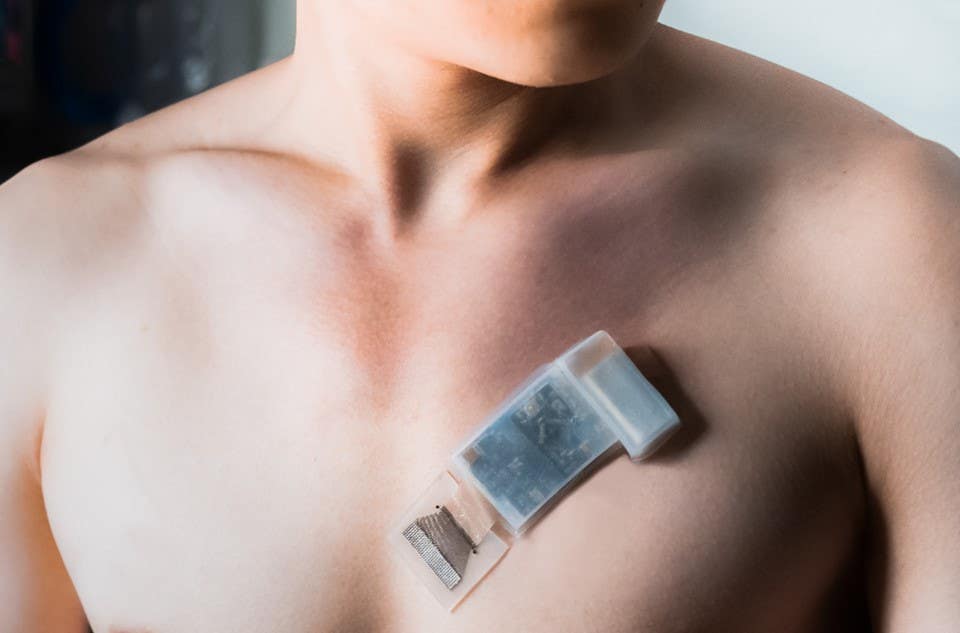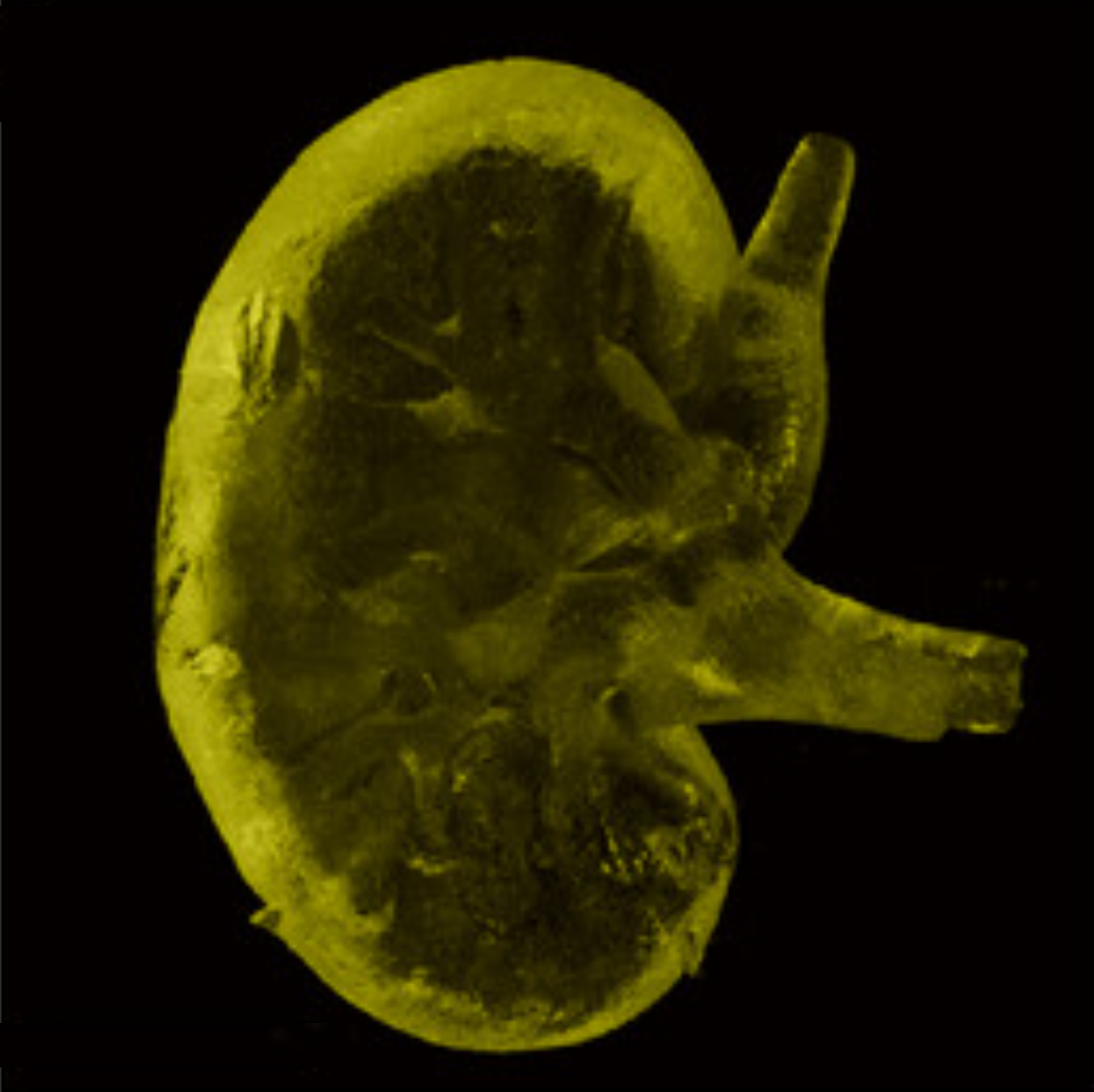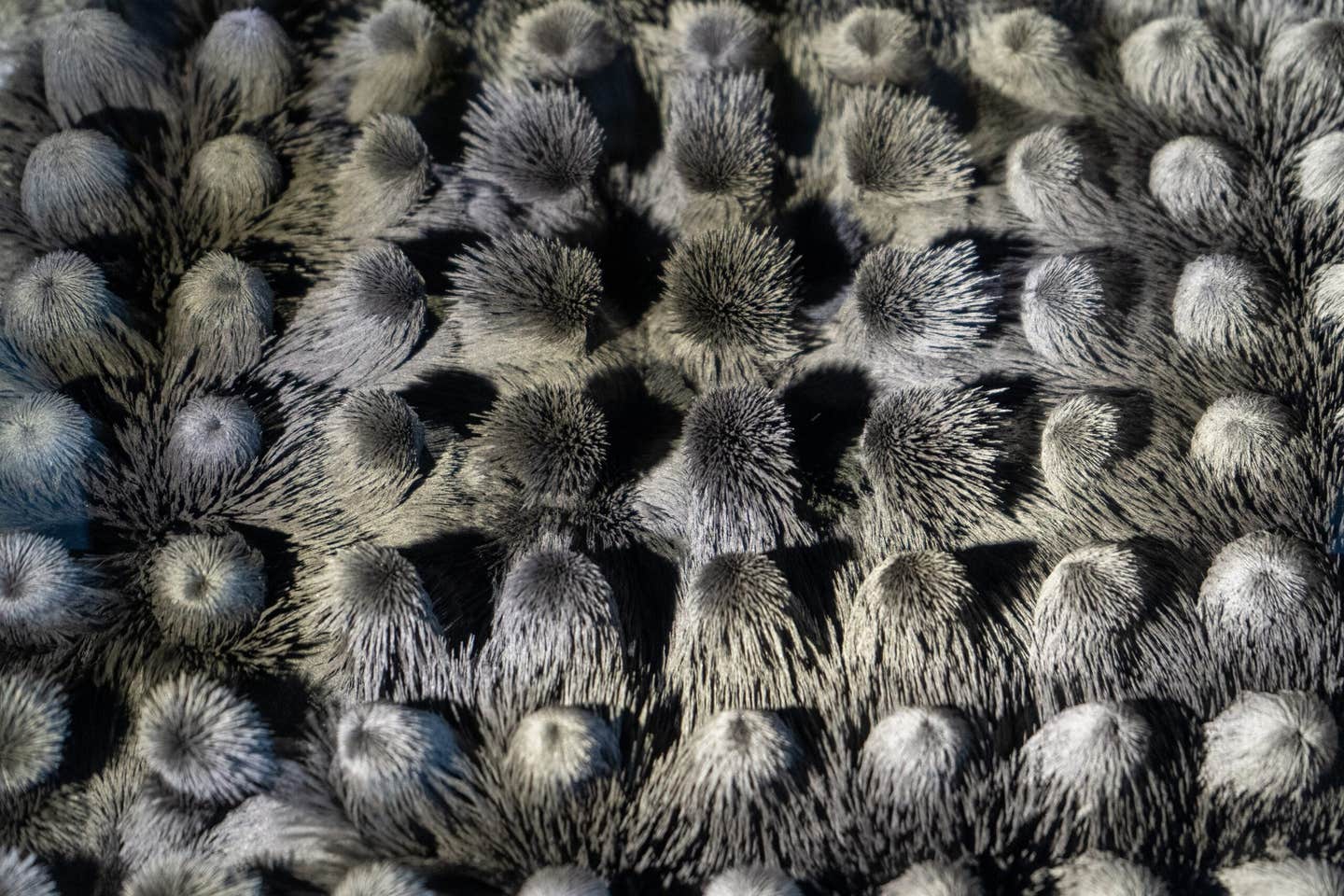Scientists develop the first fully integrated wearable system for life-saving heart monitoring
Scientists have successfully developed the world’s first fully integrated wearable ultrasound system for deep-tissue monitoring.

[May 23, 2023: Staff Writer, The Brighter Side of News]
A wearable ultrasonic-system-on-patch mounted on the chest for measuring cardiac activity. Photo by Muyang Lin for the Jacobs School of Engineering at UC San Diego. (CREDIT: UCSD)
In a major leap forward for wearable ultrasound technology, a team of engineers at the University of California San Diego has successfully developed the world's first fully integrated wearable ultrasound system for deep-tissue monitoring.
This groundbreaking innovation opens up possibilities for potentially life-saving cardiovascular monitoring, even for individuals on the move. The remarkable achievement comes as a result of extensive research conducted at one of the world's leading wearable ultrasound labs, led by Professor Sheng Xu at UC San Diego Jacobs School of Engineering.
The paper titled "A fully integrated wearable ultrasound system to monitor deep tissues in moving subjects" has been published in Nature Biotechnology, outlining the significant advancements made in the field.
Muyang Lin, a Ph.D. candidate in the Department of Nanoengineering at UC San Diego and the first author of the study, expressed his excitement about the project, stating, "This project gives a complete solution to wearable ultrasound technology—not only the wearable sensor but also the control electronics are made in wearable form factors. We made a truly wearable device that can sense deep tissue vital signs wirelessly."
Related Stories:
The research builds upon the previous work of the lab in soft ultrasonic sensor design. However, unlike earlier soft ultrasonic sensors that required tethering cables for data and power transmission, this fully integrated wearable ultrasonic system-on-patch (USoP) includes a small, flexible control circuit that communicates wirelessly with an ultrasound transducer array to collect and transmit data. To interpret the data and track subjects in motion, a machine learning component has been incorporated into the system.
According to the findings of the UC San Diego lab, the ultrasonic system-on-patch enables continuous tracking of physiological signals from tissues as deep as 164 mm, allowing for the continuous measurement of central blood pressure, heart rate, cardiac output, and other physiological signals for up to twelve hours at a time.
Lin emphasizes the potential life-saving applications of this technology, stating, "This technology has lots of potential to save and improve lives. The sensor can evaluate cardiovascular function in motion. Abnormal values of blood pressure and cardiac output, at rest or during exercise, are hallmarks of heart failure."
A wearable ultrasonic-system-on-patch for deep tissue monitoring. (CREDIT: Muyang Lin for the Jacobs School of Engineering at UC San Diego)
Furthermore, the USoP represents a significant breakthrough in the development of the Internet of Medical Things (IoMT), which refers to a network of medical devices connected to the internet, wirelessly transmitting physiological signals to the cloud for computing, analysis, and professional diagnosis.
Professor Sheng Xu's lab has been at the forefront of wearable ultrasound technology, transforming stationary and portable devices into stretchable and wearable ones, revolutionizing healthcare monitoring. The lab's success can be attributed, in part, to its close collaboration with clinicians.
Lin highlights this collaboration, saying, "Although we are engineers, we do know the medical problems that clinicians face. We have a close relationship with our clinical collaborators and always get valuable feedback from them. This new wearable ultrasound technology is a unique solution to address many vital sign monitoring challenges in clinical practice."
Exposed electronics within the wearable ultrasonic-system-on-patch for deep tissue monitoring. (CREDIT: Muyang Lin for the Jacobs School of Engineering at UC San Diego)
During the development process, the team discovered that the system had more capabilities than originally anticipated. Lin explains, "At the very beginning of this project, we aimed to build a wireless blood pressure sensor. Later on, we figured that this system could measure many more critical physiological parameters than blood pressure, such as cardiac output, arterial stiffness, expiratory volume, and more, all of which are essential parameters for daily healthcare or in-hospital monitoring."
However, the challenge arose when the subject was in motion, leading to relative movement between the wearable ultrasonic sensor and the tissue target, necessitating frequent manual readjustments. To address this issue, the team developed a machine learning algorithm capable of automatically analyzing the received signals and selecting the most appropriate channel to keep track of the moving target.
Fully exposed electronics within the wearable ultrasonic-system-on-patch for deep tissue monitoring. (CREDIT: Muyang Lin for the Jacobs School of Engineering at UC San Diego)
Ziyang Zhang, a master's student in the Department of Computer Science and Engineering at UC San Diego and co-first author of the paper, explains, "We eventually made the machine learning model generalization work by applying an advanced adaptation algorithm. This algorithm can automatically minimize the domain distribution discrepancies between different subjects, which means the machine intelligence can be transferred from subject to subject. We can train the algorithm on one subject and apply it to many other new subjects with minimal retraining."
The successful implementation of the machine learning algorithm brings new possibilities for real-time monitoring of deep tissues in individuals engaged in physical activities. It eliminates the need for constant manual adjustments, ensuring accurate and reliable measurements even when the subjects are on the move. This breakthrough further solidifies the potential impact of wearable ultrasound technology in various healthcare applications.
Overview of the fully integrated USoP. (CREDIT: Nature Biotechnology)
Looking ahead, the team plans to conduct more extensive testing of the wearable ultrasound system among larger populations. Xiaoxiang Gao, a postdoctoral scholar in the Department of NanoEngineering at UC San Diego and co-first author of the study, shares their future vision, stating, "So far, we have only validated the device performance on a small but diverse population. As we envision this device as the next generation of deep-tissue monitoring devices, clinical trials are our next step."
The development of the fully integrated wearable ultrasound system also paves the way for its integration into the Internet of Medical Things (IoMT). By connecting medical devices wirelessly to the internet, the system can transmit physiological data to the cloud for further analysis, enabling healthcare professionals to remotely monitor patients' vital signs and make informed decisions.
This advancement in IoMT not only enhances patient care but also has the potential to revolutionize healthcare delivery by improving accessibility and reducing the need for in-person visits.
Note: Materials provided by The Brighter Side of News. Content may be edited for style and length.
Like these kind of feel good stories? Get the Brighter Side of News' newsletter.



